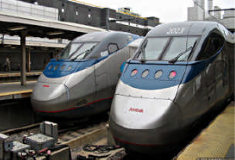 P.I.:
P.I.:
Cinzia Cirillo
University
University of Maryland
Year:
2014
Project Report:
NTC 2014 Information Form_Principal Investigator_Cinzia Cirillo_September 2014.pdf
NTC 2015 Information Form_Principal Investigator_Cinzia Cirillo_March 2015.pdf
NTC2014-SU-R-20 Cinzia Cirillo.pdf
Subject Area:
Basic/Applied Research
Description:
In this study, we propose a dynamic framework based on discrete choice models developed in the context of railway revenue management. Dynamic discrete choice models have been firstly developed in economics, and applied to study a variety of problems that include fertility and child mortality Wolpin (1984), occupational choice Miller (1984), patent renewal Pakes (1986), and machine replacement Rust (1987). In dynamic discrete choice structural models, agents are forward looking and maximize expected inter-temporal payoffs; the consumers get to know the rapidly evolving nature of product attributes within a given period of time and different products are supposed to be available on the market. The timing of consumers' purchases is usually formalized as an optimal stopping problem where the agent (consumer) must decide on the optimal time of purchase (Rust, 1987). To the authors’ knowledge, this is the first attempt to incorporate dynamics in individual choices to revenue management modeling and in particular to formalize tickets’ exchange and cancel decisions for railway intercity trips. The railway operator in consideration offers fully refundable fare and provides flexibility in ticket exchange which makes ticket cancellation and exchange decision to be very crucial to the RM system. Passengers are incentivized to purchase ticket early and adjust their ticket later when they are more certain about trip schedules. The model accounts for passengers’ trip adjustment choice and explicitly specifies the probability of exchanging ticket as a function of the set of available exchange tickets. Passenger demand model estimated from the sales data will quantify factors affecting passenger behavior such as ticket price, departure time, departure day and other related factors. By knowing how passengers are going to respond to certain control policy based on the passenger demand model estimates, an optimized seat inventory control will be derived as a function of the time before departure. At each time snapshot before the departure date, the seat inventory control policy can be dynamically optimized and updated to maximize the expected revenue to the railway operator. This passenger demand model estimation and seat inventory control policy is expected to provide meaningful data to railways operators in terms of passenger behavior and control policy with potential revenue improvement.
Top